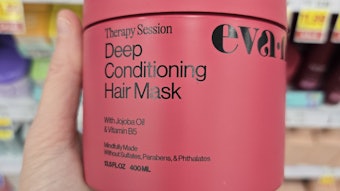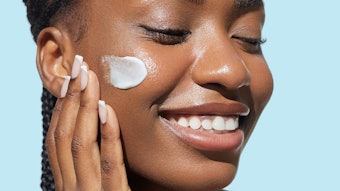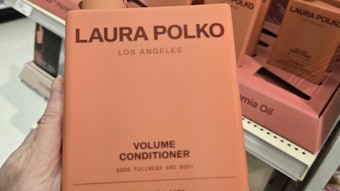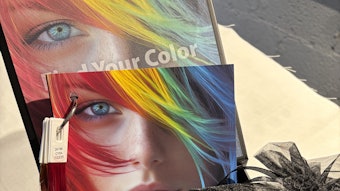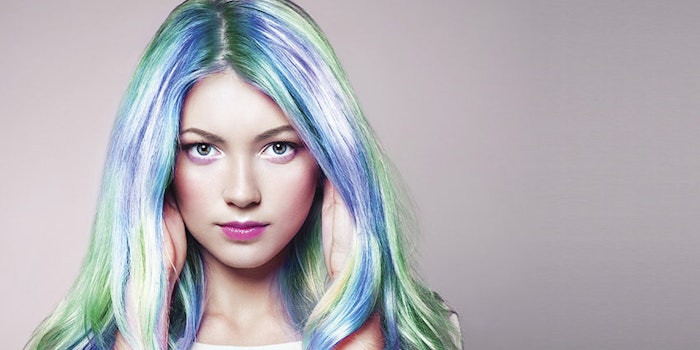
Click through to the June 2019 digital edition to read the complete article.
Scalp care products have, in the past, primarily focused on controlling dandruff and itching. However, a recent trend is moving toward scalp health maintenance and the prevention of inflammation.
Figure 1 illustrates the factors that may cause scalp irritation. Other than chemical residues from treatment and other products—which can be avoided in many cases—sebum and scalp drying are the key factors. Freshly secreted sebum forms a thin film on the scalp and hair surfaces for protection purposes. However, the sebum remaining on the scalp can be oxidized over time, induced by UV rays and air pollution such as PM2.5, which results in irritative lipid peroxide. In fact, it has been reported that the oxidized squalene is significantly increased at sites where the scalp is inflamed.1
So far, Malassezia inhibitors such as ZPT and OCT have been widely used as anti-dandruff agents but they often negatively affect the cosmetic performance of shampoos.
It is known that triglycerides in human sebum can be broken down by Malassezia fungi into saturated and unsaturated fatty acids. The saturates are consumed by Malassezia, and the abundant unsaturated components left on the scalp can penetrate and induce inflammation.2-4 Therefore, Malassezia inhibition has been an important and key approach to anti-dandruff shampoos over the past decades.
So far, Malassezia inhibitors such as zinc pyrithione (ZPT) and piroctone olamine (OCT) have been widely used as anti-dandruff agents in hair shampoos. While effective for Malassezia inhibition, these ingredients often negatively affect the cosmetic performance of shampoos. For example, particle-like ZPT has negative effects on hair conditioning performance and the stability and transparency of the shampoo. OCT requires strict manufacturing equipment or packaging materials in order to avoid yellowing, which is caused by ion exchanges with iron.
In relation, the stratum corneum is important to barrier function, preventing moisture evaporation and the penetration of foreign substances. But since the scalp has a much thinner barrier than the majority of skin, it is more apt to be the source of skin problems; so it is particularly important to suppress any reduction in its barrier function.5
Moisturizing the scalp to enhance its defensive power is therefore critical, and polyols such as glycerin and 1,3-butylene glycol are known to effectively moisturize skin while also withstanding oxidation caused by PM2.5 and UV, or decomposition by Malassezia. Taken together, the present study investigated a relatively hydrophobic polyol and known skin moisturizer, decylene glycola, for its effects of both inhibiting Malassezia and controlling sebum secretion.
Materials and Methods
Effects against Malassezia: To assess the ingredient’s efficacy against Malassezia species, the minimum inhibitory concentration (MIC) of Malassezia was determined using the method published by the Clinical and Laboratory Standards Institute.6, 7
In vivo sebum test: This test was conducted by treating the face and forehead of 20 subjects—between the ages 17 and 19, and having oily skin—with a carbomer-based gel containing or not (control) 2% decylene glycol. The products were applied for 28 days. Changes in sebum levels were measuredb and photos were taken at different stages for visualization.
In vivo dandruff test: This test was conducted by treating the scalps of 26 test subjects between ages of 29 and 54 and presenting with scalp flaking.
The procedure comprised:
1) A wash-out period for two weeks using a commercial hair shampoo three times each week;
2) Treatment with the commercial hair shampoo, to which 1% decylene glycol was added, three times per week for four weeks;
3) A second, two-week wash-out period; and
4) At 0, 2, 4 and 6 weeks after treatment with the test sample—i.e., T0w, T2w, T4w and T6w, respectively—combing the hair and collecting the dandruff, followed by evaluating the ratios of dandruff areas via image analysisc. Microscopic images of the scalp also were takend.
Continue reading in the June 2019 digital edition...
References
- Jourdain, R., et al. (2016). Exploration of scalp surface lipids reveals squalene peroxide as a potential actor in dandruff condition. Arch Dermatol Res, 308(3), 153-63.
- In Ro, B., et al. (2005). The role of sebaceous gland activity and scalp microfloral metabolism in the etiology of seborrheic dermatitis and dandruff. J Invest Derm Symp Proc, 10, 194-197.
- Yvonne, M., DeAngelis, et al. (2005). Three etiologic facets of dandruff and seborrheic dermatitis: Malassezia fungi, sebaceous lipids and individual sensitivity. J Invest Derm Symp Proc, 10, 295-297.
- Dawson, T. L., Jr. (2007). Malassezia globosa and restricta: Breakthrough understanding of the etiology and treatment of dandruff and seborrheic dermatitis through whole-genome analysis. J Invest Derm Sym Proc, 12(2), 15-9.
- Toshiyuki, K. (2011). Formulation development of hair care products for care of the scalp. Fragrance J, 39(9), 62-68.
- Clinical and Laboratory Standards Institute (2008). Reference method for broth dilution antifungal susceptibility testing of filamentous fungi. Approved standard, 2nd edn. M38-A2. Retrieved from https://clsi.org/media/1455/m38a2_sample.pdf
- Clinical and Laboratory Standards Institute (2008). Reference method for broth dilution antifungal susceptibility testing of yeasts. Approved standard, 3rd edn. M27-A3. Retrieved from https://clsi.org/media/1461/m27a3_sample.pdf
- Lin, X., et al. (2018). Successive combing force measurements for dynamic evaluation. Cosm & Toil, 133(5), 40-47.


